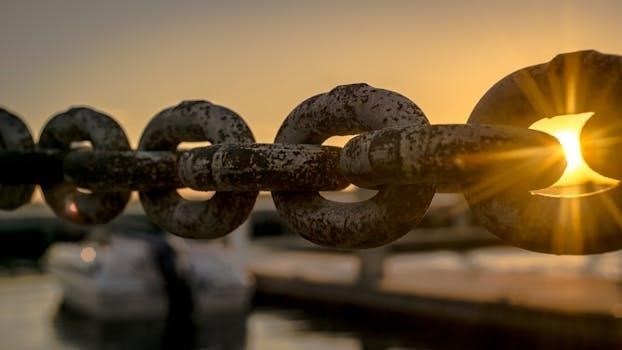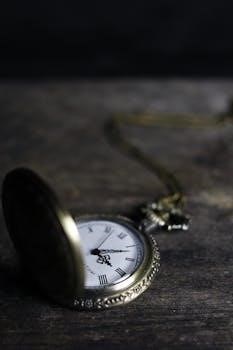DRZ400 Cam Chain Replacement Guide
This guide offers a comprehensive overview of the DRZ400 cam chain, its importance, wear indicators, and replacement steps. Whether you’re a seasoned mechanic or a novice rider, this guide will equip you with the knowledge to keep your DRZ400 running smoothly.
The DRZ400 cam chain, a crucial component within the engine, synchronizes the crankshaft and camshafts, ensuring precise valve timing. Proper valve timing is paramount for optimal engine performance, fuel efficiency, and overall reliability. The cam chain endures significant stress due to high-speed rotation and constant tension, making it susceptible to wear and stretching over time.
Understanding the DRZ400 cam chain is essential for any owner or mechanic seeking to maintain peak engine performance. This guide aims to provide a comprehensive understanding of the cam chain, its function, common issues, and the replacement process. By familiarizing yourself with the cam chain, you can proactively identify potential problems and perform necessary maintenance, preventing costly engine damage and ensuring your DRZ400 remains a dependable machine.
Whether you’re experiencing unusual engine noises, suspect cam chain wear, or simply seeking to perform preventative maintenance, this guide will equip you with the knowledge to confidently tackle the task.
Importance of Cam Chain and Guides
The cam chain and its associated guides play a vital role in the DRZ400 engine. The cam chain’s primary function is to synchronize the rotation of the crankshaft and camshaft(s). This synchronization ensures that the engine’s valves open and close at precisely the correct times relative to the piston’s position, enabling the combustion cycle to occur efficiently.
The cam chain guides, typically made of durable plastic or composite materials, serve to maintain proper chain tension and prevent excessive vibration or slack. These guides ensure the chain follows the correct path, preventing it from rubbing against other engine components, which could lead to premature wear or damage. Furthermore, the guides help dampen noise generated by the chain’s movement, contributing to a quieter and smoother engine operation.
Without a properly functioning cam chain and guides, the engine’s timing can become inaccurate, leading to reduced power, poor fuel economy, increased emissions, and potential engine damage. Regular inspection and timely replacement of worn cam chains and guides are crucial for maintaining the DRZ400’s performance and longevity.
Signs of Cam Chain Wear
Recognizing the signs of cam chain wear is crucial for preventing engine damage and ensuring optimal performance. One of the most common indicators is a rattling noise emanating from the engine, particularly at idle or low RPMs. This noise often indicates that the chain has stretched and is slapping against the engine components.
Another sign is difficulty starting the engine or a noticeable decrease in power. A worn cam chain can cause the engine timing to become inaccurate, leading to these symptoms. Additionally, an improperly adjusted or malfunctioning automatic cam chain tensioner can also contribute to these issues.
Visual inspection can also reveal signs of wear. Check the cam chain tensioner’s extension. If it is extended near its limit, the chain is likely stretched. Inspect the cam chain guides for wear or damage. Grooves, cracks, or missing pieces indicate that the guides need replacement. Finally, if you’re performing a valve adjustment, note whether the timing marks on the camshaft sprockets align correctly with the crankshaft at Top Dead Center (TDC). Misalignment suggests cam chain stretch.
Tools and Materials Required
Before embarking on a cam chain replacement, gathering the necessary tools and materials is essential for a smooth and efficient process. You’ll need a new cam chain specifically designed for the DRZ400, ensuring it matches the original in length and specifications. A new set of cam chain guides is highly recommended, as the old ones are likely worn and can compromise the new chain’s performance.
Essential tools include a socket set with various sizes, including those for removing the cam cover, tensioner, and other engine components. A torque wrench is crucial for tightening bolts to the correct specifications, preventing damage to the engine. You’ll also need a set of wrenches, pliers, and screwdrivers.
Specialized tools might include a flywheel puller (if removing the side cover), a TDC (Top Dead Center) locking pin to secure the crankshaft, and a cam locking tool to prevent the camshafts from rotating during the process. Don’t forget consumables such as engine oil, coolant (if draining the system), a new valve cover gasket, and thread locker. Also, have rags and cleaning supplies on hand.
Step-by-Step Cam Chain Replacement Procedure
Replacing the cam chain on a DRZ400 requires careful attention to detail. Start by setting the engine to TDC on the compression stroke, ensuring the valves are closed. Then, remove the valve cover and carefully inspect the camshafts and their alignment marks. Next, remove the cam chain tensioner to release tension on the chain;

With the tension released, carefully detach the old cam chain from the camshaft sprockets. Depending on the method you choose, you may need to split the old chain or remove one of the camshafts. Once the old chain is removed, thread the new cam chain through the engine, ensuring it’s properly seated on the crankshaft sprocket. Reattach the cam chain to the camshaft sprockets, aligning the timing marks according to the service manual.

After installing the new chain, reinstall the cam chain tensioner and verify that the timing marks are still aligned. Rotate the engine manually to ensure smooth operation and proper chain tension. Finally, reinstall the valve cover with a new gasket, torque the bolts to the specified values, and replenish any drained fluids.

Removing the Cam Chain Tensioner
Before embarking on the cam chain replacement, it’s crucial to properly remove the cam chain tensioner. This component maintains the correct tension on the cam chain, preventing excessive slack and ensuring proper valve timing. Begin by locating the tensioner on the cylinder head, typically on the right side of the engine.
Using the appropriate wrench or socket, carefully loosen the tensioner’s mounting bolts. As you loosen the bolts, be mindful of any spring pressure that may be present. Slowly remove the tensioner from its housing, taking note of its orientation for reinstallation. If your DRZ400 is equipped with an automatic tensioner, it may be necessary to retract the plunger before removal.
Once the tensioner is removed, inspect it for any signs of wear or damage. Check the plunger for smooth movement and ensure that the ratchet mechanism is functioning correctly. If the tensioner is worn or damaged, consider replacing it with a new unit. With the tensioner removed, you can now proceed with the cam chain replacement procedure.
Locking the Crank and Cams
To ensure proper timing and prevent any accidental movement during the cam chain replacement, it’s essential to lock the crankshaft and camshafts in place. Begin by rotating the crankshaft until the piston is at Top Dead Center (TDC) on the compression stroke. You can verify TDC by aligning the timing marks on the crankshaft pulley with the corresponding mark on the engine case.
Once the crankshaft is at TDC, use a suitable locking tool or pin to secure it in place. This will prevent the crankshaft from rotating while you’re working on the camshafts. Next, align the camshaft timing marks with the corresponding marks on the cylinder head. These marks typically consist of lines or dots on the camshaft sprockets.
With the camshafts aligned, use another locking tool or clamp to secure them in place. This will prevent the camshafts from rotating independently, ensuring that the valve timing remains accurate. By locking the crankshaft and camshafts, you can safely remove the old cam chain and install the new one without disrupting the engine’s timing.
Cam Removal (If Necessary)
In some cases, cam removal might be necessary for a DRZ400 cam chain replacement, especially if access to the chain is restricted or if you’re inspecting the cams themselves. Before attempting removal, ensure the crankshaft is locked at TDC on the compression stroke, and the camshafts are also secured using appropriate locking tools. This prevents accidental rotation and maintains timing.
Carefully loosen and remove the camshaft bearing caps, noting their original position and orientation, as they must be reinstalled in the same way. Gradually loosen the bolts in a crisscross pattern to evenly distribute the pressure and avoid warping the caps. Once the caps are removed, the camshafts can be gently lifted out of the cylinder head.

Take care not to damage the bearing surfaces or the cylinder head. With the camshafts removed, inspect them for wear, damage, or any signs of excessive friction. If necessary, replace the camshafts with new ones. Remember to lubricate the camshafts and bearing surfaces with fresh engine oil before reinstallation.
Installing the New Cam Chain
With the old cam chain removed and the crankshaft and camshafts properly positioned, it’s time to install the new cam chain on your DRZ400. Begin by carefully threading the new chain down through the cylinder head and around the crankshaft sprocket. Ensure the chain is properly seated on the sprocket teeth to prevent slippage or misalignment. If you are working alone, you can use a small screw driver to guide the chain down.
Next, carefully position the camshafts back into their original locations, aligning the timing marks on the camshaft sprockets with the corresponding marks on the cylinder head. The camshafts should sit freely. With the camshafts in place, loop the new cam chain around the camshaft sprockets.
Double-check the timing marks to ensure they are perfectly aligned. Any misalignment can cause serious engine damage. Once you’re confident in the alignment, carefully reinstall the camshaft bearing caps, tightening the bolts in a crisscross pattern to evenly distribute the pressure. Torque the bolts to the manufacturer’s specifications.
Installing the Cam Chain Guides
Now, with the new cam chain in place, the next crucial step involves installing the cam chain guides. These guides are essential for maintaining proper chain tension and preventing excessive wear. Begin by lubricating the new guides with engine oil to facilitate smooth installation and reduce friction during initial operation.
Carefully insert the front cam chain guide, ensuring that the cylinder looking retainer on the guide fits securely into the notch on the cylinder. The bottom of the guide should fit snugly into the pocket in the case. The front guide slips in front of the chain.
Next, install the rear cam chain guide, making sure it is properly seated and aligned. Secure the bottom of the guide with the small retaining plate. Ensure all fasteners are tightened to the manufacturer’s specified torque. Double-check that the guides are correctly positioned and do not interfere with the cam chain’s movement. Proper installation of the cam chain guides is crucial for optimal engine performance and longevity.
Adjusting the Cam Chain Tensioner (Manual or Automatic)
Once the cam chain and guides are installed, adjusting the tensioner is critical. For automatic tensioners, ensure proper installation and functionality. The tensioner should extend to maintain chain tension without being too tight. If using a manual tensioner, loosen the lock nut and carefully adjust the tensioner screw until slight resistance is felt against the chain guide.
Avoid overtightening, as this can cause premature wear on the chain and guides. Secure the lock nut once the desired tension is achieved. After the initial adjustment, start the engine and listen for any unusual noises. Fine-tune the tensioner as needed until the engine runs smoothly and quietly. Regularly inspect the tensioner to ensure it maintains proper chain tension. A properly adjusted cam chain tensioner is essential for engine performance and longevity. Recheck the adjustment after the first few rides to ensure optimal performance.
Common Problems and Troubleshooting
Replacing the cam chain on a DRZ400 can present challenges. A common issue is difficulty removing the old chain or installing the new one, especially without disassembling the top end. Ensure the engine is at TDC and the cams are properly aligned to ease this process. Another problem is incorrect tensioner adjustment, leading to chain noise or excessive wear. Double-check the tensioner after installation and during regular maintenance.
Stripped threads on the tensioner bolts or guides are also possible. Use caution when tightening fasteners and consider using a torque wrench. If threads are damaged, repair them with a thread insert kit. If rattling sounds persist after replacement, the new chain may be defective, or other engine components might be worn. Inspect the valve train and crankshaft for any additional issues. A thorough inspection and careful attention to detail will help resolve most common problems.
